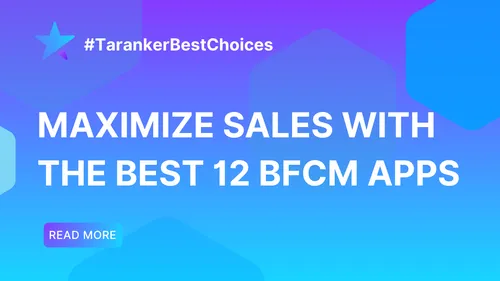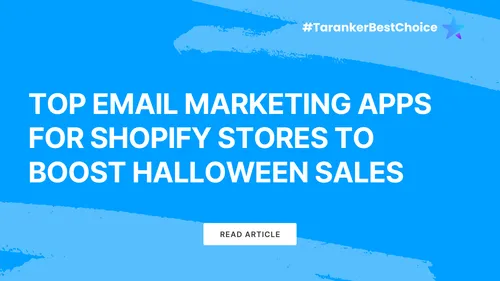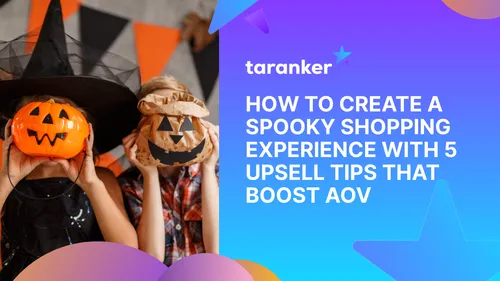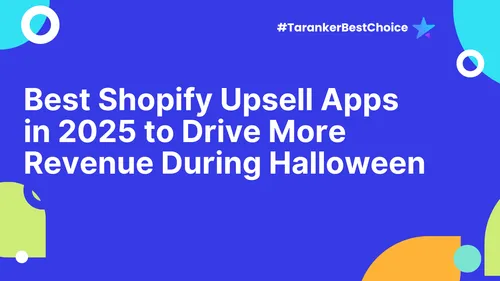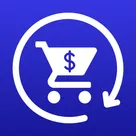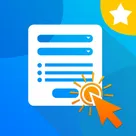The Back to School season marks a critical and highly competitive period in the retail calendar, with countless brands vying for the attention and wallets of students and parents preparing for the new academic year. For eCommerce stores, this presents both an incredible opportunity and a significant challenge: how to stand out amid the noise and convert browsing into meaningful sales.
Traditional sales tactics and generic promotions often fall short in this environment. To truly maximize revenue during this peak season, eCommerce businesses must innovate their upsell strategies, leveraging the latest technologies and a deep understanding of customer psychology. By combining artificial intelligence-driven personalization with insights into shoppers’ emotions and behaviors, stores can deliver targeted, timely, and relevant offers that resonate with their audience.
In this article, we explore seven breakthrough upsell strategies that harness the power of AI and psychological principles. These approaches are designed not only to boost average order values but also to enhance the overall shopping experience-turning the Back to School season into a period of sustained growth and competitive advantage for your business.
Strategy 1: Ultra-Precise Personalization with Predictive AI
In today’s competitive Back to School market, generic upsell offers no longer cut it. Shoppers expect highly relevant, timely recommendations that reflect their unique needs and preferences. Ultra-precise personalization powered by predictive AI takes upselling to the next level by anticipating what customers will want before they even realize it themselves.

Implementation Steps:
-
Collect Comprehensive Behavioral Data:
Begin by gathering detailed data on customer behavior throughout their entire shopping journey-this includes page views, search queries, time spent on specific products, cart additions, past purchases, and even abandoned carts. The more comprehensive the dataset, the more accurate your AI predictions can be. -
Deploy Predictive AI Models:
Use advanced machine learning models to analyze this behavioral data in conjunction with historical sales trends, seasonal patterns, and external factors like market shifts. These models identify patterns and predict Back to School shopping needs, such as which product categories or bundles are likely to be popular with different customer segments. -
Personalize Upsell Offers in Real-Time:
Leverage these AI insights to dynamically generate personalized upsell offers tailored to each individual shopper as they browse your site or app. For example, a parent viewing backpacks for their child might simultaneously receive an upsell offer for lunchboxes or stationery sets specifically curated for that child’s age and interests. -
Continuously Monitor and Refine Recommendations:
Collect feedback from customer interactions-such as offer acceptance rates, click-through rates, and sales data-to train your AI models further. This ongoing learning loop helps refine the accuracy of upsell recommendations, ensuring they stay relevant as customer preferences and market conditions evolve.
Benefits:
-
Significantly Increases Conversion Rates: By showing the right offer at the right time, predictive AI makes customers more likely to add extra items to their cart.
-
Boosts Average Order Value: Personalized upsell offers encourage customers to spend more, raising the overall value of each transaction.
-
Enhances Customer Experience: Shoppers feel understood and valued, which increases brand loyalty and repeat purchases.
Challenges:
-
Data Requirements: Effective predictive AI requires access to large volumes of high-quality, accurate data spanning various customer touchpoints. Without this, models may produce unreliable or irrelevant recommendations.
-
Technological Complexity: Implementing and maintaining AI-powered personalization demands powerful computational resources and expertise in data science and machine learning. It may also require integration with existing eCommerce platforms and analytics tools.
-
Privacy Considerations: Collecting and processing personal behavioral data must comply with privacy regulations and customer expectations to avoid trust issues.
Who Should Apply:
-
Medium to Large Enterprises: Businesses with substantial customer data and resources to invest in AI infrastructure will benefit most from this approach.
-
Brands Focused on Advanced Personalization: Companies seeking to differentiate themselves by delivering highly tailored, engaging shopping experiences can leverage predictive AI to achieve a competitive edge during the busy Back to School season and beyond.
Strategy 2: Flexible Combo Creation by Customer Segments
Creating dynamic product bundles or combos tailored to specific customer segments is a highly effective upsell strategy during the Back to School season. By understanding the distinct needs, preferences, and purchasing behaviors of different groups, stores can craft combo offers that feel personalized and valuable, increasing both sales volume and customer satisfaction.

Implementation Steps:
-
Analyze Customer Segments Thoroughly:
Begin by segmenting your customer base using various criteria such as shopping behavior, demographics (age, student vs. parent), purchase history, and preferences. For example, parents buying for elementary school children might have different needs than college students or teachers. Utilize analytics tools to identify these segments and their unique characteristics. -
Select Products for Segment-Specific Combos:
Based on insights from segmentation, curate product bundles that appeal specifically to each group. For instance, a combo for high school students might include backpacks, notebooks, and calculators, while one for younger students could bundle crayons, coloring books, and lunchboxes. The goal is to create logical, complementary product sets that add convenience and perceived value. -
Set Attractive and Profitable Pricing:
Pricing combos requires a balance between being appealing to customers and maintaining profitability. Offer a discount compared to buying items separately, but ensure margins remain sustainable. Consider experimenting with different discount levels or bundle sizes to find the sweet spot. -
Test, Measure, and Optimize:
Launch your combo offers to selected segments and closely monitor acceptance rates, average order values, and customer feedback. Use A/B testing to compare different combos and pricing models. Based on data, refine your bundles to improve effectiveness continuously.
Benefits:
-
Increases Average Order Value: Bundles encourage customers to purchase more items at once, boosting total transaction value.
-
Enhances Customer Satisfaction: Customers appreciate the convenience and savings offered by well-designed combos tailored to their needs.
-
Differentiates Your Offering: Segment-specific combos demonstrate a deep understanding of customer needs, building loyalty and trust.
Challenges:
-
Requires Deep Customer Insights: Crafting effective combos demands accurate and detailed segmentation data, which can be resource-intensive to collect and analyze.
-
Inventory and Pricing Complexity: Managing stock levels for multiple bundles and ensuring profitable pricing strategies adds operational complexity, requiring sophisticated inventory and pricing systems.
Who Should Apply:
-
Stores with Diverse Product Lines: Retailers offering a wide range of items that naturally complement each other benefit most from bundling strategies.
-
Businesses with Clear Customer Segments: Companies that have a well-defined understanding of their customer groups can design and target bundles more effectively.
-
Brands Focused on Increasing Sales Volume: Product bundling is ideal for businesses aiming to maximize revenue per customer and improve turnover.
Strategy 3: Gamify the Upsell Experience to Engage Customers
Gamification transforms the upsell process into an interactive, enjoyable experience, encouraging customers to engage more deeply with your store and increasing the likelihood of additional purchases. Especially during the Back to School season, when shoppers are overwhelmed by options, making upselling fun and rewarding can differentiate your brand and boost sales.
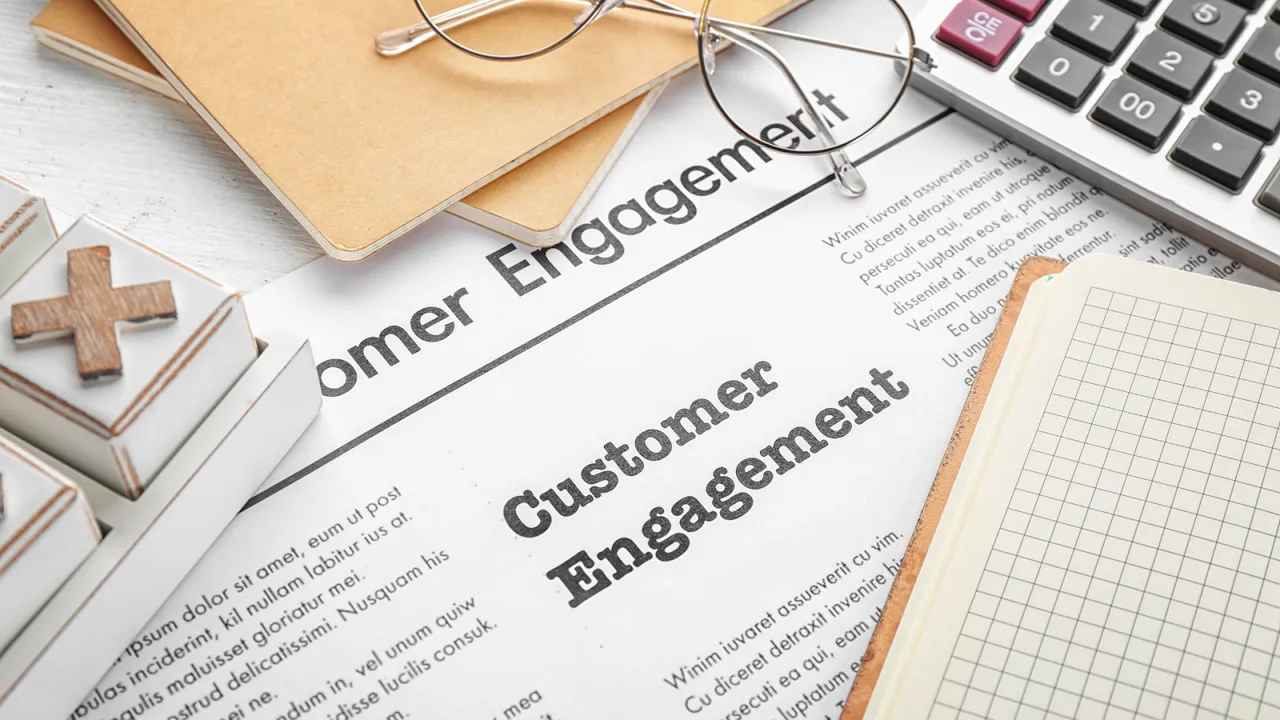
Implementation Steps:
-
Design Engaging Game Elements:
Create game-like features such as lucky wheels, spin-to-win contests, reward points for adding extra items to the cart, or scratch cards that offer discounts or gifts. These elements should be visually appealing and simple to participate in, making the upsell process feel like an enjoyable activity rather than a sales push. -
Integrate Gamification Seamlessly:
Embed these game elements directly into your website, mobile app, or use popups during key moments in the shopping journey (e.g., after adding a product to the cart or before checkout). Ensure that the gamified upsell offers do not disrupt the shopping flow but rather enhance it. -
Promote and Track Campaign Performance:
Launch your gamified upsell campaigns with targeted marketing through email, social media, and on-site banners. Measure engagement metrics such as participation rates, conversion rates from game offers, and the average order value uplift to evaluate and optimize the effectiveness of your gamification strategy.
Benefits:
-
Increases Customer Interaction: Gamification encourages customers to spend more time on your site and engage actively with your offers, creating a memorable shopping experience.
-
Encourages Additional Purchases: The thrill of winning rewards or discounts motivates customers to add more items to their cart, boosting upsell success.
-
Enhances Brand Differentiation: By offering a unique and fun shopping experience, you create stronger brand affinity and loyalty.
Challenges:
-
Maintaining Engagement: Games must be carefully designed to be fun and fresh; repetitive or uninspiring games can lead to customer fatigue or frustration.
-
Resource Investment: Developing, implementing, and maintaining high-quality gamified experiences requires creative and technical investment, including design, development, and ongoing updates.
Who Should Apply:
-
Brands Seeking Differentiation: Companies that want to stand out in a crowded market by offering innovative and engaging shopping experiences.
-
High Traffic Stores: Retailers with significant website or app traffic looking to increase customer interaction time and conversion rates.
-
Businesses with Marketing Resources: Brands capable of investing in creative gamification campaigns and analyzing their impact for continuous improvement.
Strategy 4: Trigger Upsells Based on Real-Time Behavior
Real-time behavior-triggered upselling enables stores to present the most relevant offers precisely when customers are most receptive. By monitoring user actions live and reacting instantly with targeted suggestions, retailers can significantly increase the chances of conversion and enhance the overall shopping experience.

Implementation Steps:
-
Monitor Customer Actions in Real-Time:
Track key behaviors such as the products a customer is viewing, the time they spend on specific pages, mouse movements, scrolling patterns, and interactions like adding items to the cart or wishlist. This detailed behavioral data forms the foundation for timely upsell triggers. -
Define Behavior-Based Upsell Rules:
Establish rules that determine when and what upsell offers should be triggered. For example, if a customer spends more than 60 seconds on a laptop page, show an offer for a laptop bag or extended warranty. If a product is added to the cart, trigger complementary product suggestions immediately. -
Display Contextual Upsell Offers:
Show relevant and compelling upsell options such as accessories, upgrades, or related products through popups, banners, or inline recommendations. The offers should feel natural and helpful, not intrusive or pushy. -
Measure Performance and Optimize:
Continuously track key metrics like conversion rates, click-through rates, and average order value from behavior-triggered upsells. Use A/B testing to refine rules and optimize the timing, placement, and content of upsell offers for maximum effectiveness.
Benefits:
-
Maximizes Conversion Potential: Offering the right product at the right moment captures customer interest when they are most engaged.
-
Improves Customer Experience: Personalized, timely offers enhance satisfaction by helping customers discover relevant products seamlessly.
-
Increases Average Order Value: Strategic upsells boost cart size without disrupting the purchase flow.
Challenges:
-
Requires High-Speed Data Processing: To react instantly, systems must analyze large volumes of behavioral data quickly and accurately.
-
Real-Time Data Accuracy: Behavioral data must be continuously updated and clean to avoid irrelevant or mistimed offers that could frustrate customers.
Who Should Apply:
-
Stores Focused on Conversion Optimization: Retailers aiming to maximize sales per visitor by delivering hyper-relevant offers.
-
Businesses With Data Analytics Investment: Companies equipped with or willing to invest in sophisticated real-time data analytics and trigger infrastructure.
Strategy 5: Emotion-Based Upsell Messaging
Emotional connection plays a powerful role in influencing purchasing decisions, especially during the Back to School season when customers often experience feelings of preparation stress, care for their children’s success, and a desire to save money. Crafting upsell messages that tap into these emotions can significantly improve customer engagement and increase upsell acceptance.
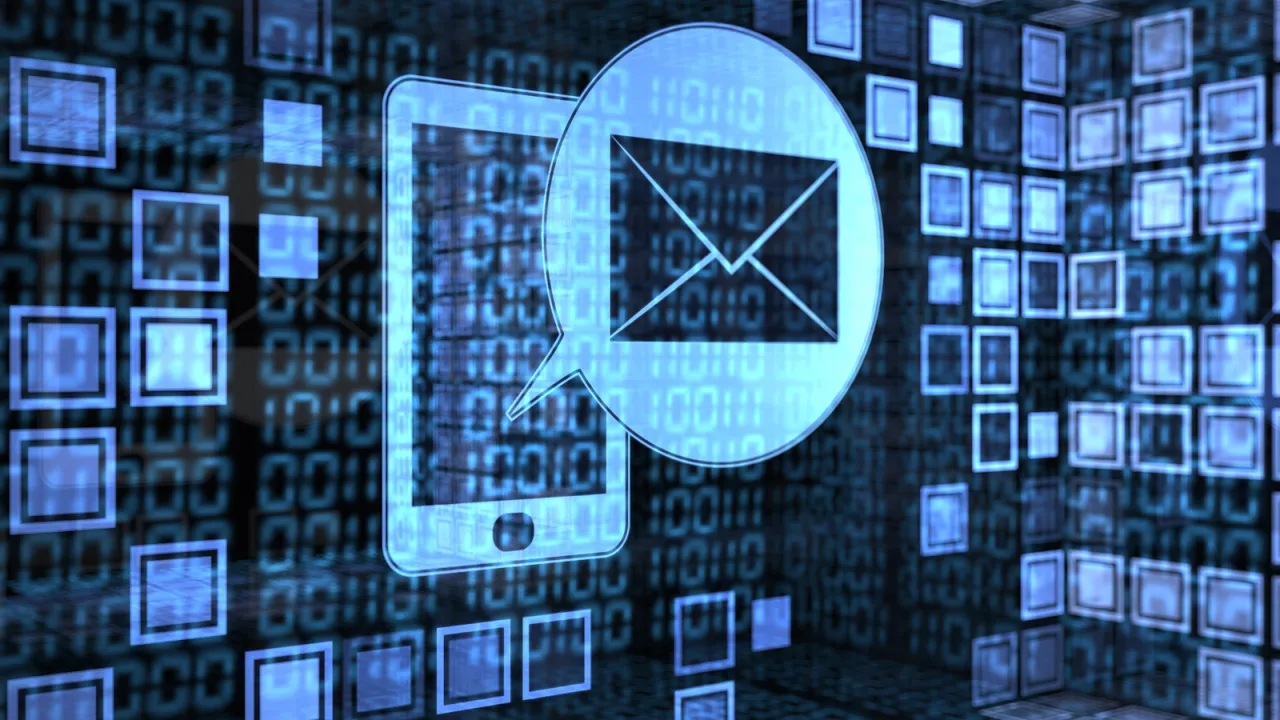
Implementation Steps:
-
Research Customer Psychology and Emotional Drivers:
Conduct market research and analyze customer feedback to understand the common emotions experienced during the Back to School period. Key feelings might include anxiety about readiness, pride in providing for children, or the satisfaction of getting a good deal. -
Craft Compelling, Storytelling-Based Upsell Content:
Develop upsell messages that tell relatable stories or create scenarios that resonate emotionally. For example, an upsell for a study desk could emphasize how it helps children focus and succeed, appealing to parents’ desire to support their child’s education. -
Segment and Personalize Messaging:
Tailor your upsell content to different psychological customer segments. For example, budget-conscious shoppers might receive messaging focused on savings and value, while premium buyers get messages emphasizing quality and durability. -
Test and Refine Messaging:
Use A/B testing to experiment with different emotional tones, narratives, and calls to action. Track engagement and conversion rates to identify the most effective approaches.
Benefits:
-
Increases Upsell Acceptance: Emotional resonance makes customers more receptive to suggestions, increasing the likelihood of additional purchases.
-
Strengthens Brand Loyalty: Emotionally engaging content fosters trust and deepens customer relationships, encouraging repeat business.
-
Differentiates Your Brand: Personalized emotional messaging sets your store apart from generic upsell approaches.
Challenges:
-
Requires Marketing Expertise: Crafting effective emotional content demands a nuanced understanding of psychology and creative marketing skills.
-
Difficult to Measure Impact: Emotional influence can be subtle and hard to quantify with traditional metrics, making it challenging to optimize campaigns solely based on data.
Who Should Apply:
-
Stores With Skilled Marketing Teams: Businesses that have or can invest in creative talent to develop compelling emotional content.
-
Brands Seeking Customer Connection: Companies aiming to build authentic, trustful relationships with their audience, beyond transactional interactions.
Strategy 6: Smart Multi-Channel Upselling - Reach Customers Anytime, Anywhere
In today’s connected world, customers interact with brands across multiple channels - websites, email, SMS, social media, and more. A smart multi-channel upselling strategy ensures your upsell messages are delivered consistently and personalized across all these touchpoints, maximizing your chances of converting customers wherever they are.

Implementation Steps:
-
Develop Upsell Campaigns Across Multiple Channels:
Design and launch upsell offers not just on your website or app but extend them to email newsletters, SMS alerts, and social media platforms. This approach ensures you stay top-of-mind and relevant throughout the customer’s journey. -
Personalize Content for Each Channel and Customer Behavior:
Tailor your upsell messages based on the unique characteristics and user behavior specific to each channel. For example, SMS upsells may be brief and time-sensitive, while email can include more detailed product bundles or storytelling. Personalize based on customer actions like past purchases or browsing history. -
Synchronize Data Across Channels:
Integrate your customer data to maintain a single, unified view across platforms. This synchronization prevents redundant or conflicting messages and allows seamless tracking of customer interactions, helping you refine campaigns in real time. -
Monitor and Optimize Continuously:
Use analytics tools to track performance metrics such as open rates, click-through rates, conversion rates, and overall sales uplift per channel. Adjust your messaging, timing, and offer types based on insights to maximize ROI.
Benefits:
-
Broader Reach: Engages customers on their preferred platforms, increasing exposure to upsell offers.
-
Improved Conversion Rates: Personalized and timely messages across channels significantly increase the likelihood of purchase.
-
Consistent Brand Experience: Maintaining a unified voice and offer structure enhances trust and brand loyalty.
Challenges:
-
Complex Campaign Management: Coordinating upsell activities across multiple platforms requires sophisticated planning and technical integration.
-
Higher Costs: Increased operational and technological investments are necessary for data integration, content creation, and campaign management.
-
Data Privacy Compliance: Managing customer data across channels necessitates strict adherence to privacy regulations.
Who Should Apply:
-
Large Brands With Omnichannel Infrastructure: Companies equipped with resources and teams capable of managing complex, multi-channel marketing efforts.
-
Businesses Focused on Holistic Customer Journeys: Stores aiming to provide seamless and personalized shopping experiences at every touchpoint.
Strategy 7: Use Smart Data to Predict Shopping Trends and Adjust Upsells Flexibly
Successfully navigating the dynamic Back to School market requires more than just reactive tactics-it demands proactive use of smart data to forecast trends and adapt upsell strategies accordingly. By leveraging both historical sales data and real-time market insights, businesses can fine-tune their upsell offers and inventory management for optimal performance.

Implementation Steps:
-
Collect and Analyze Comprehensive Data:
Gather detailed historical sales records, current transaction data, and market trend information related to Back to School products. This includes analyzing seasonality, customer preferences, and emerging product demands. -
Forecast Trending Products:
Use predictive analytics to identify which products or categories are likely to experience increased demand. This helps prioritize inventory stocking and shape upsell bundles that capitalize on popular items. -
Optimize Inventory and Upsell Plans:
Align inventory levels with forecasted demand to avoid overstocking or stockouts. Simultaneously, design upsell campaigns featuring these trending products or complementary items to boost average order values. -
Rapidly Adjust Campaigns Based on Real Demand:
Monitor sales and customer behavior continuously during the Back to School season. Be prepared to quickly modify upsell offers, promotions, and inventory strategies in response to actual market fluctuations or unexpected shifts. -
Generate Reports and Continuously Optimize:
Implement a reporting framework that tracks campaign performance, inventory turnover, and customer response rates. Use these insights for ongoing optimization and better preparation for future seasons.
Benefits:
-
Prevents Overstocking and Stockouts: Efficient inventory management reduces costs and missed sales opportunities.
-
Maximizes Upsell Campaign Effectiveness: By focusing on trending products, upsell offers become more relevant and appealing.
-
Enhances Business Agility: Enables rapid response to changing market conditions, maintaining competitiveness.
Challenges:
-
Data Infrastructure Requirements: Managing and analyzing large volumes of data demands robust data systems and technology investments.
-
Need for Skilled Analysts: Interpreting complex data and making informed decisions requires experienced data scientists and analysts.
-
Integration Complexity: Combining multiple data sources and linking them with upsell campaign systems can be technically challenging.
Who Should Apply:
-
Medium to Large Enterprises: Businesses with access to extensive sales data and resources to support advanced analytics.
-
Stores Seeking Operational Precision: Companies aiming for nimble, data-driven decision-making to optimize both sales and inventory management.
Afterthought
The Back to School season presents more than just a surge in sales-it offers a unique chance to rethink how upselling can be approached in a smarter, more customer-centric way. By leveraging intelligent, data-driven strategies that combine cutting-edge technology with a deep understanding of customer psychology, businesses can not only increase average order values but also foster meaningful, personalized shopping experiences.
These experiences help build stronger customer relationships and a sustainable competitive advantage that extends well beyond the seasonal rush. The key lies in continuously adapting, testing, and refining upsell tactics based on real-time insights and evolving consumer behavior. In doing so, brands position themselves not just to meet immediate sales goals but to thrive in the dynamic and ever-changing retail landscape.
FAQs
1. What makes AI-powered upsell strategies more effective than traditional upselling?
AI-powered upsell strategies analyze vast amounts of customer data in real time, enabling highly personalized and context-aware product recommendations. Unlike traditional upselling, which often relies on static rules or general suggestions, AI adapts to individual preferences and behaviors, increasing the relevance of offers and significantly boosting conversion rates and average order values.
2. How can businesses measure the success of their upsell campaigns during the Back to School season?
Businesses can measure success by tracking key performance indicators (KPIs) such as upsell acceptance rates, increase in average order value (AOV), conversion rates on upsell offers, and overall revenue uplift. Using analytics tools that provide real-time insights and customer behavior data allows continuous optimization of campaigns to maximize their impact throughout the Back to School period.
